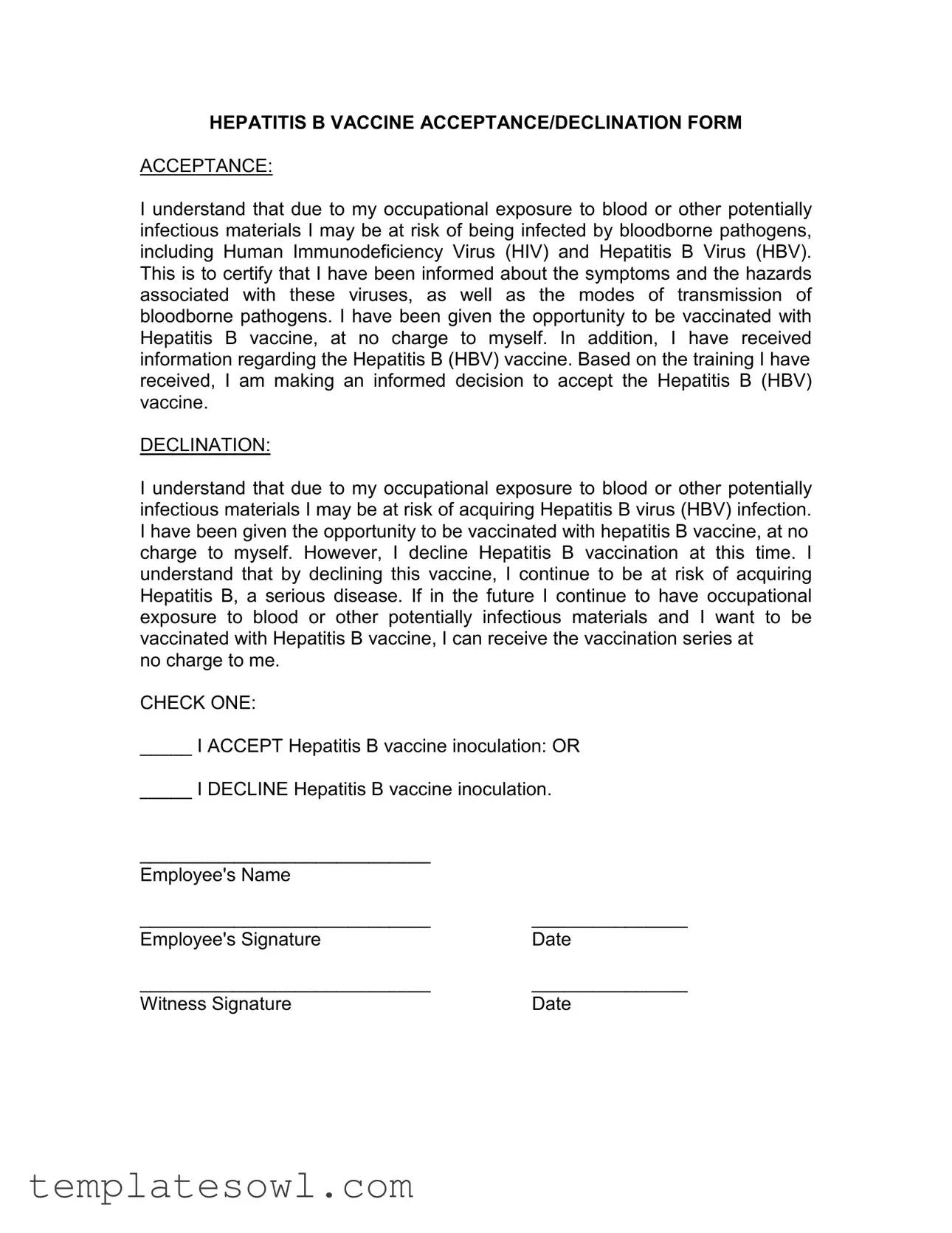What is the purpose of the Hepatitis B Documentation Form?
The Hepatitis B Documentation Form serves to inform employees about the risks associated with exposure to Hepatitis B Virus (HBV) and provides them an opportunity to accept or decline the vaccination. This ensures that employees make an informed decision regarding their health and safety in the workplace.
Who needs to fill out this form?
Any employee who may be at risk of occupational exposure to blood or other potentially infectious materials should fill out this form. This is especially critical for those in healthcare, laboratory, or similar fields where such exposure is a possibility.
What happens if I decline the Hepatitis B vaccination?
If you choose to decline the Hepatitis B vaccination, you acknowledge that you are aware of the risks involved. You remain at risk for acquiring HBV. However, you retain the right to receive the vaccination later, free of charge, if you decide you want it in the future.
Is there any cost associated with the vaccination?
No, the Hepatitis B vaccination is provided at no charge to you. This is a standard practice to encourage all employees who may be at risk to protect themselves without worrying about financial costs.
Can I change my mind after declining the vaccine?
Yes, you can change your mind at any time. If you experience ongoing occupational exposure and later decide to receive the Hepatitis B vaccination, you can do so without any cost. Just inform your employer or the designated health official to initiate the vaccination series.
What information should I read before accepting the vaccine?
Before accepting the vaccine, you should review information regarding the symptoms, hazards associated with HBV, and the modes of transmission of bloodborne pathogens. This knowledge helps you make an informed decision about your health and potential risks in your workplace.
